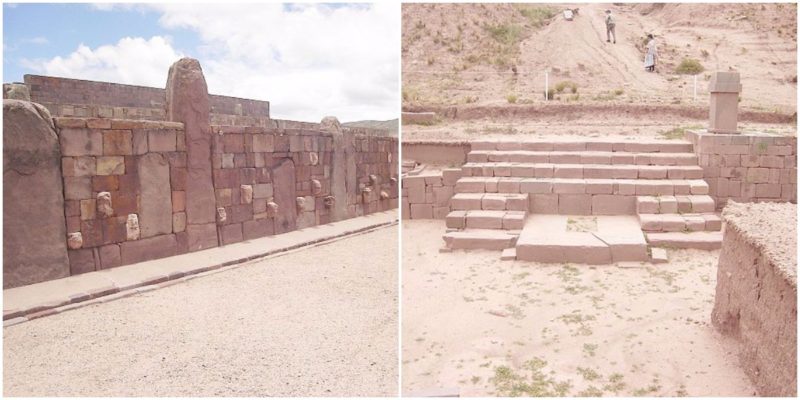Tiwanaku (Tiahuanaco or Tiahuanacu in Spanish language) is ruined ancient city located 44 miles west of La Paz near the south-eastern side of Lake Titicaca in western Bolivia.
It is a crucial Pre-Columbian archaeological site named after one of the most powerful civilizations which thrived in the region before the rise of the Inca Empire. In fact, Tiwanaku was the capital of the lost and very influential civilization that dominated a large area of the south part of the Andean region between 500 and 900 AD.
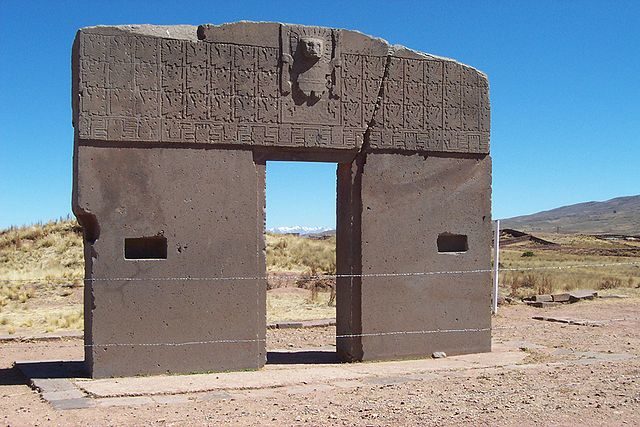
Tiwanaku is known as one of the highest and oldest urban centers ever built. It is placed nearly 13,000 feet above sea level. The remains of the city were discovered by the Spanish conquistador Pedro Cieza de Leon in 1549, while he led an expedition that was searching for the capital of the Inca region of Qullasuyu. He and his men were the first Europeans who visited a long time abandoned city of Tiwanaku. Actually, he recorded the site for the first time ever in written history.
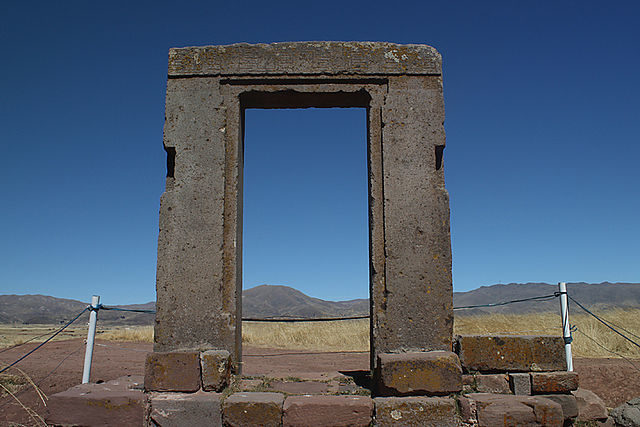
The original name of the city which was known to its residents is probably lost forever, because from the so far discovered archaeological documents and artifacts, the linguists believe that the people of Tiwanaku had no written language. It is also believed that they spoke the Puquina (or Pukina) language, which is an extinct language once spoken by the people that lived in the area surrounding Lake Titicaca, in modern day Bolivia and Peru.
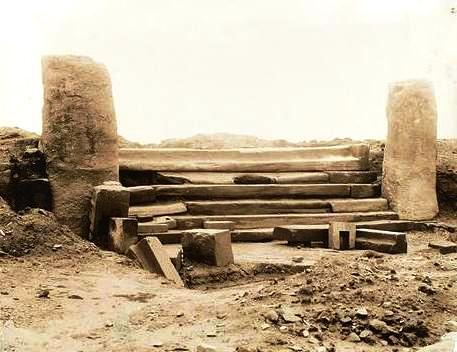
At its highest peak Tiwanaku had between 30,000 and 70,000 residents (from 500 till 900 AD). But the story of Tiwanaku began much earlier. The archaeological discoveries indicate that the area was inhabited from the approximately 1500 BC. Tiwanaku at first was a small agriculture village. The location between Lake Titicaca and the dry highlands were more than ideal for agricultural farming.
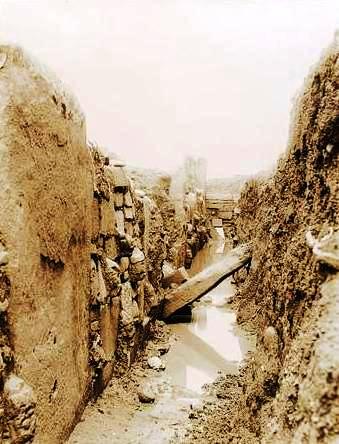
The ancient people that populated the area also developed several agricultural techniques that made the farming process more successful. Irrigation systems formed from canals and aqueducts provided the land, which was suitable for growing potatoes, with fresh water from the lake. The roots for a strong empire were laid down. People from other regions come to live in Tiwanaku and the small village, which in large part was encircled by mountains and hills, became an administrative, political and religious center of the region. Around 400 AD a state in the Titicaca area was born and Tiwanaku was developed into an urban planned city.
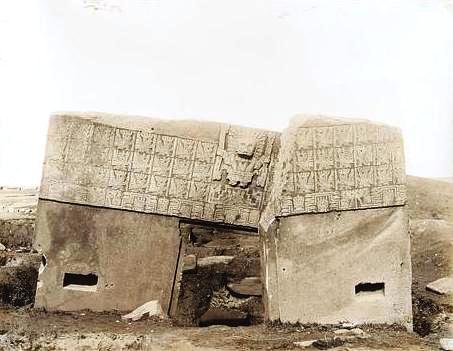
New structures were built, like sculptures, symbolical gateways and colossal religious buildings. Also new roads were built with a complex underground drainage system that controlled the flow of the rain waters. At the sacred center were built several temples, a pyramid, monoliths and mysterious carvings. Many of the monuments in Tiwanaku were built in alignment with the sunrise. The Gods were worshiped and praised there, and people, even from far away, made pilgrimages at Tiwanaku. Circa 500 AD Tiwanaku became the main political power around Lake Titikaka. The most dominant period of Tiwanaku was in the 8th century AD.
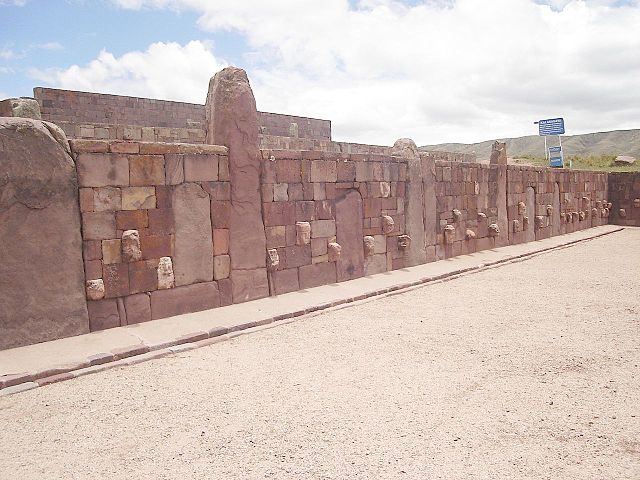
The city expanded to cover 4 square miles, but most of it today is underneath the modern town and only a small part of the ancient city has been excavated. Many of the artifacts were also stolen through the centuries. But the excavated and survived structures, although in ruins, depict the greatness of this civilization. The buildings, especially the houses for living, were largely built from mud brick.
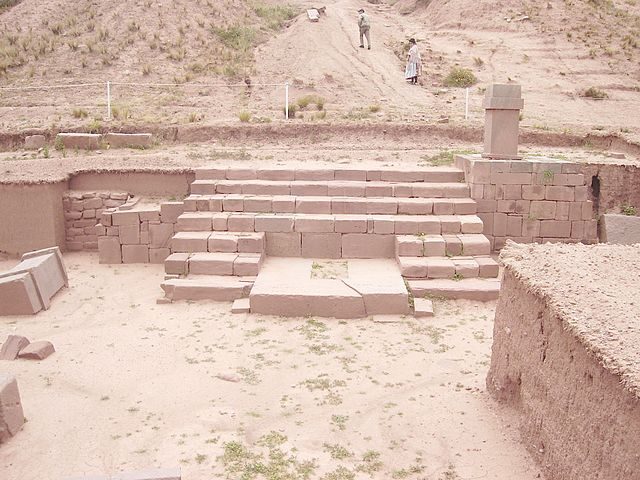
Some of the most significant structures, which are situated in the sacred center, were built from stone. The ingenious artisans perfected techniques for carving and refining the stone materials and the combination of grand scale with the developed architectural style made the city a very unique place. The nucleus of the scared center life was the Akapana Temple. It was an artificial hill built on 7 levels, and it looked more like a stepped pyramid of earth, approximately 50 feet high. The top of the hill was a platform were rituals were held. It was paved with volcanic rocks and stone channels were made to drain the water down from the terraces. Today the temple is not so impressive, because it was destroyed by the conquistadors and its material was used for building local churches and houses.
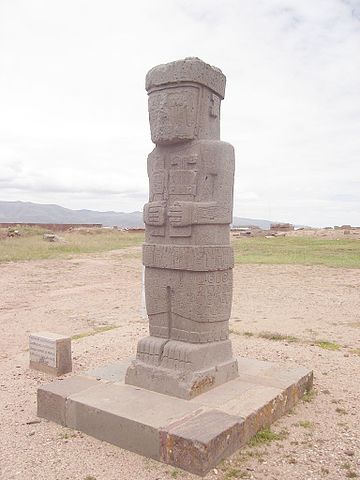
North of Akapana is the Kalasasaya Temple. It is a large elongated and rounded open temple, encircled with walls made of huge blocks of red sandstone. It is believed that was used as an ancient observatory. The access is placed in the center of the eastern wall on a staircase of seven steps and there are two carved stone monoliths on each side. In the interior there are other monoliths, like the monolith of “The Priest”, and the monumental “Gateway of the Sun” which is one of the most famous structures in Tiwanaku. It is made from a single block of volcanic rock and it is believed that it weighs 44 tons. Another impressive structure is the smaller “Gateway of the Moon”.
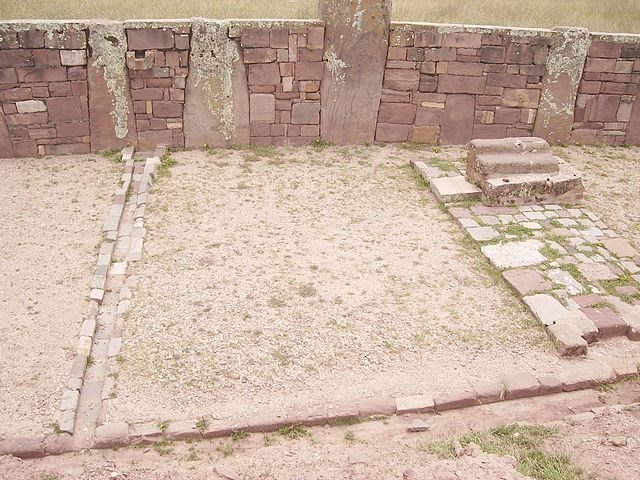
East of the main access of Kalasasaya is the Semi-subterranean Temple. It is made from red sandstone and its walls are decorated with 175 sculptures of unusual human faces. West of Kalasasaya Temple is a large rectangular area known as Putini, which is still under process of excavation. On the east side is located the site known as Kantatayita and on south is the large archaeological site of Puma Punku, where can be found megaliths that weigh more than 440 tons. At the moment there are several projects for excavating in the area and it wouldn’t be a surprise if something “new” came out from the earth from this lost and mysterious civilization.
